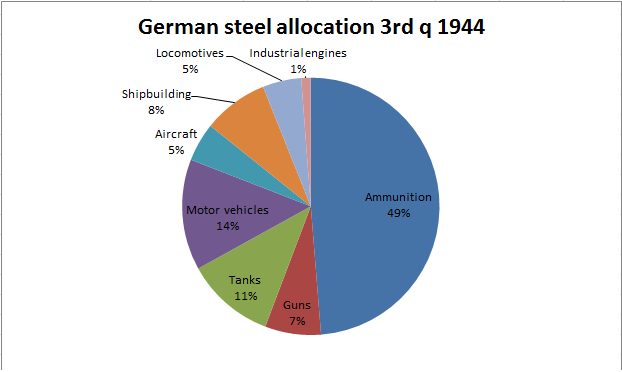Guaporense wrote:British relatively contribution was obviously smaller from before June 1944, compared to it's proportion in June 1945 of western allied forces.
Why? See point two through five.
True. But I was supporting the assertion that British forces were 10% of the ground forces in Europe.
You wrote the following statement in a response to a statement about the balance between the British Army and the Royal Air Force, which you went on to elaborate with references to US supplies and strategic bombing:
[...] British contribution to allied victory was in the end very small [...]
You can't retroactively alter your arguments to refer to only a subset of the arguments you made in your initial post.
The size of divisions in that document was adjusted by that factor. The Russian divisions numbered nearly 600 but were converted to 264 "equivalent divisions", to be comparable numerically to western allied forces.
While it is not entirely clear whether the document refers to the theoretical or actual organization of the divisions, the most probably interpretation is the former. If so, the conversion is not reliable.
Well, the correlation between German deployments against allied forces and size of allied forces suggest the relative number of divisions was similarly proportional to fighting strength.
Why? If the fighting strength of the two forces were about the same, how do you explain the almost completely one-sided success of the Allies on the Western Front?
Although losses in the Eastern front in terms of killed and wounded were higher in per capita terms (about 800,000 KIA/WIA in the last 7 months of 1944 compared to 216,000 KIA/WIA for the last 7 months of 1944 in the western front), which suggests fighting there was more intensive.
Is there any particular reason why you haven't included prisoners of war in those numbers? Also, you didn't actually address my point.
Why not?
This is a very trivial matter. The employment of a unit is not a function of its fighting strength. The success of a unit is not a function of its fighting strength either. Whether a unit will succeed in its objectives can not be determined by statistics.
True, but I suspect that's true: if Germans were heavily outnumbered in one section of the front relative to others they would tend to reinforce this section, keeping the relative distribution of forces proportional to the size of enemy forces.
Speculation. You also imply that the Germans had an efficient intelligence branch. In fact, British counterintelligence infiltration of the German intelligence network within the UK was total, and the decryption effort in Bletchley Park was very significant.
It's a consensus among historians that the Eastern front was more important than all other fronts combined.
That is a very strong assertion, which, if true, you should have no difficulties supporting with sources. It is also an argument from authority, which means that even if you can show that the such a consensus exists, you will not have demonstrated the truth of the actual claim.
In terms of ammunition expenditure it also appears that way: in 1943, more than 70% of German ammunition production was consumed in the eastern front, in 1944, about 60%. And ammunition production consumed 50% of all steel allocated to the German war effort by 1944, it was the most important industry in the German war effort:
The impact on the war can not be measured by ammunition consumption or any other such trivial metrics. Furthermore, you mentioned US supplies yourself, such as the lend-lease program.
